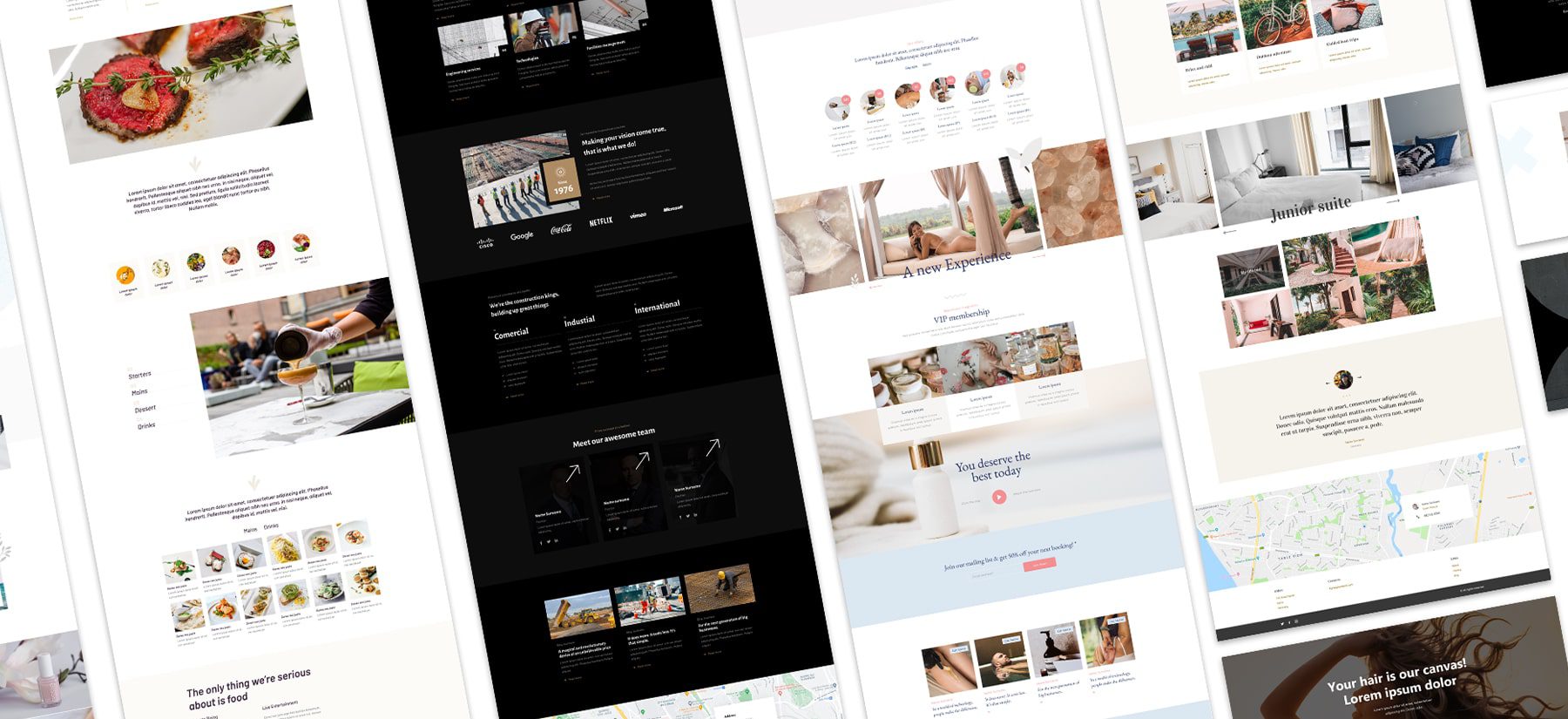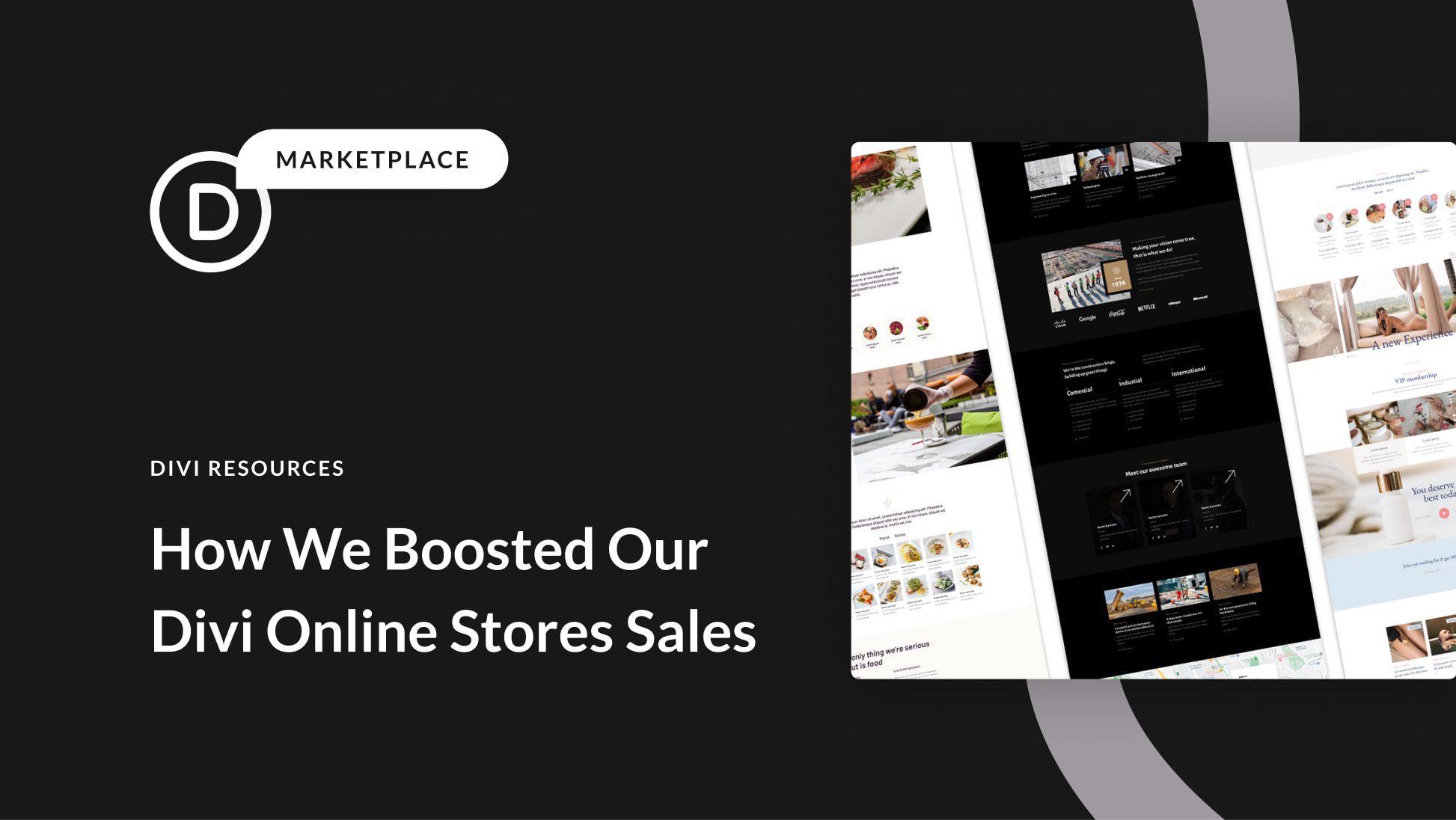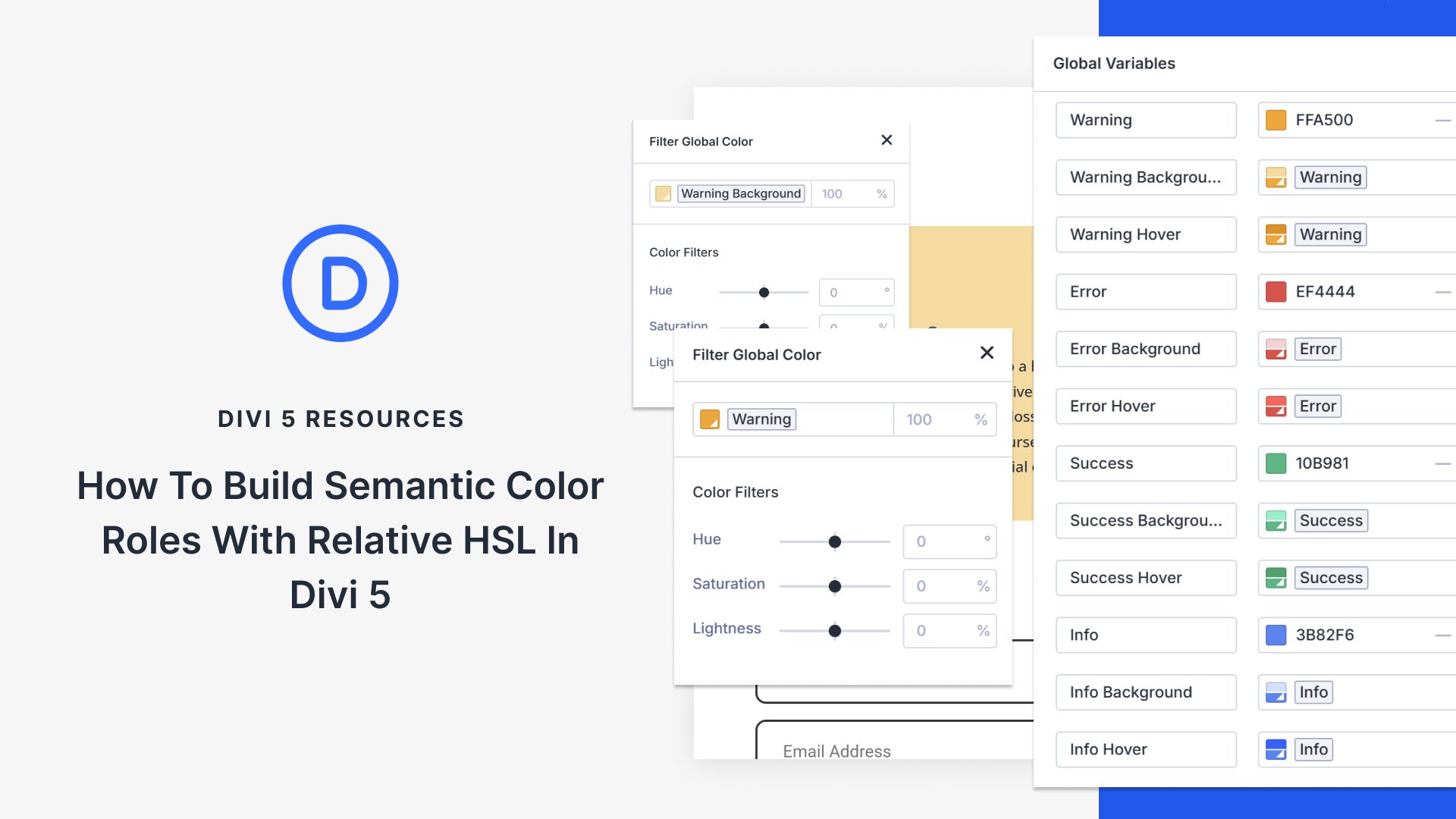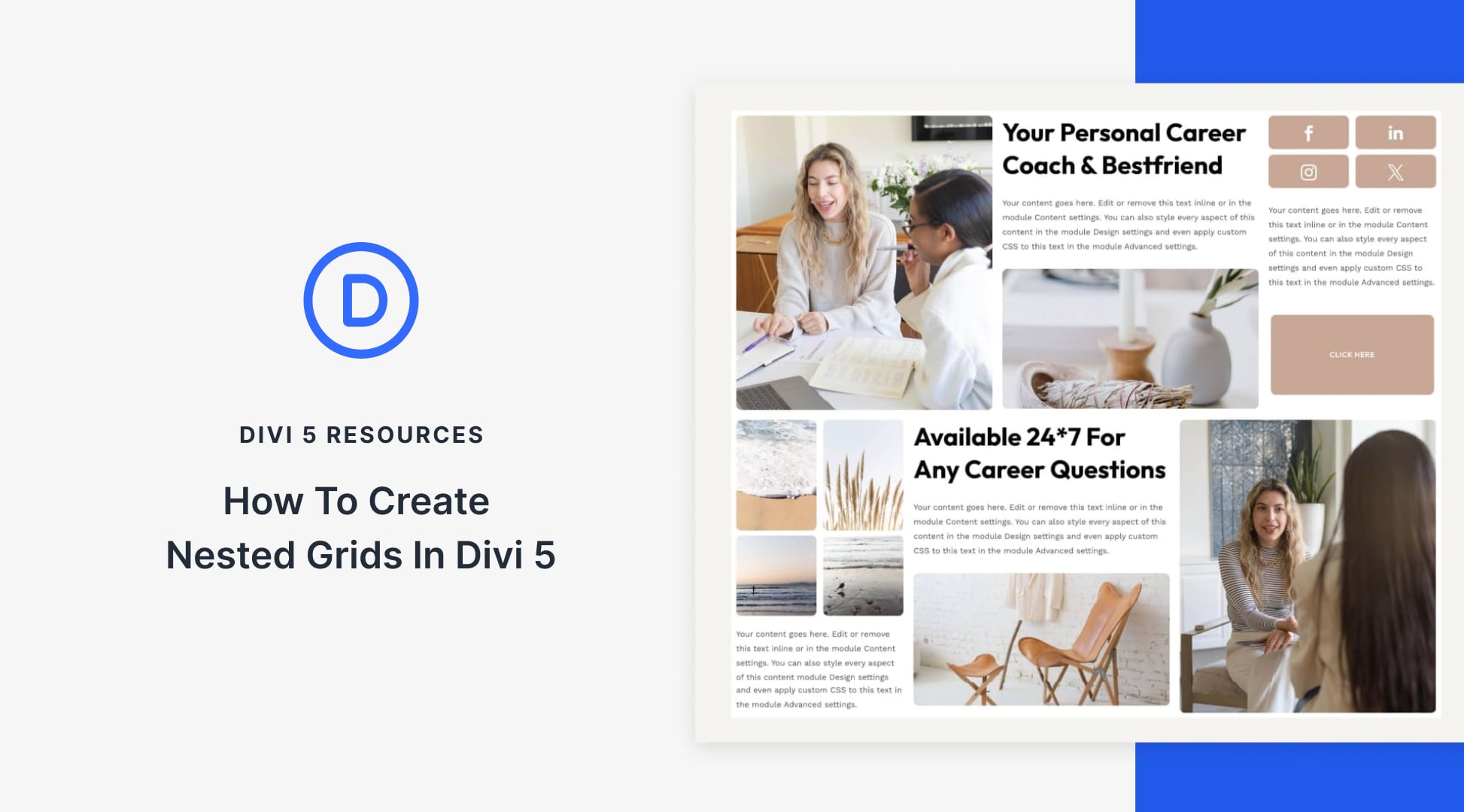This article is part 2 of a 2-part series written by the founders of Divi Den. In part 1 of this series, Kyra, my co-founder and lead designer at Divi Den, tells the colorful story of how we walked eyes-wide-shut into creating products for the Divi theme. She talks candidly about the practical lessons we learned. Many of which can be applied to your own online business.
In this second part, I write about how we tweaked and optimized our online store to keep growing and succeed as a business.
My name is Christiaan. I am the team lead and conversion rate specialist at Divi Den. Kyra and I have founded 3 different startups together since 2005. We’ve done this while traveling all over the world. Being location independent is a huge benefit of earning your income online. For our backstory and global escapades, read The Divi Den Story.
We consider ourselves extremely lucky to be able to work so closely together. Somehow, our skills are just complementary. Throw in a little bit of love and romance (we’re married) and for some people, it becomes a ticking time bomb. But not for us, it seems. I think we truly appreciate how lucky we are, and that keeps our feet on the ground.
Now that you have a bit more context, let me elaborate on our efforts to grow our Divi startup.
To bundle, or not to bundle
When we launched our first Divi product, we started from zero. Nobody in the Divi niche ever heard about us. We knew we had to put together a product that would appeal to our target audience of Divi creators.
Create a product that appeals to your target audience

First, you need to do your research. This is where Kyra is a master. She’s always looking out for new trends or ideas to play around with. The web is a fast-moving place. You can’t sit still for 6 months, or you’re drifting backward.
The key to doing your research is to get inside the mind of your customer. To stand in your customers’ shoes, so to speak. This can be difficult if you’re searching outside your field of expertise or interest. Instead, we find it helpful to use yourself as your ideal customer. You’ll have a better chance of success.
With this method, all you have to do is pay attention to the things you personally find interesting. What looks like good value? What doesn’t live up to your expectations? Use yourself as a benchmark.
Taking this same approach, Kyra asked, “What Divi product would I want to buy?”
And this is how we landed on the Unicorn bundle idea. Our ultimate long-term goal was to have recurring income but, you need a big enough library of layouts to make it worthwhile to subscribe.
To bridge that gap, we had to launch a Divi product bundle that would make people go “Wow”. Then keep launching more bundles until we had enough layouts, and value, to turn it into a subscription worth paying for.
Choosing a memorable name

This is an interesting topic. A great name will grease the wheels of your product in many ways.
A great name;
- is quick to remember (who doesn’t know what a Unicorn is?)
- is easy to talk about (have you seen the Unicorn bundle?)
- should ideally have meaning (Unicorns… what more can I say?)
Sometimes it can be a challenge to find a good name. Just keep brainstorming until you hit on the right name. When you hit the right name, it usually just sounds right, looks right, and reads right. That criteria might be vague, I agree. But we’ve found it to work well for us.
One last thing to keep in mind, you can’t please everybody with a name. Don’t let the search for the perfect name stop you from getting started. It just needs to be good enough.
The importance of trust
The internet is a big place with many actors playing the game. Personally, I won’t get my wallet out if a website looks a little bit fishy. You know, that kind of half-backed website I’m talking about. We’ve all seen them. You don’t want to get lumped into that category.
If you sell anything online, you should pay close attention to how your website and business “appears” to other people. You also need to deliver on your promises. All customer interactions should confirm that you can be trusted. It should prove that you are honest and are here to stay.
People may judge you on;
- Your tone of voice, how you write and say things.
- Your terms and conditions, privacy policy, and refund policy.
- How they feel after they interact with your support system.
This is not an exhaustive list, but I think you get the idea.
Use trust symbols strategically
Aside from walking the talk and delivering on your promises, you can add elements to your website to highlight that you can be trusted. You can define a trust symbol as anything that indicates that you are a legitimate business. It can be as simple as providing a clearly visible phone number.
These trust symbols can help;
- An SSL certificate to show https:// for your domain. Critical. A must-have.
- Relevant security symbols like badges from Verisign or McAfee.
- Real customer testimonials.
- Customer logos. With permission, of course.
- Industry-related membership badges.
- Press articles talking about your company.
- Certification badges.
- Transparent terms, policy, and privacy pages. Another must-have.
- A badge for your money-back guarantee.
Be selective about which trust symbols you add to your website. It should be relevant to what you’re doing or selling. If it’s not relevant to your potential customer, it may cast doubt on your credibility.
How to think about pricing
One-off digital product sales are very different from subscriptions. With a one-off product, you need to pack in enough value to justify the price. It might add extra development time and cost, which you have to pay before you even make one cent. It also means you get the sale only once.
With this sales model, you’ll be under constant pressure to find new customers. To keep growing, you’ll need a steady supply of new products. There will be constant product launches. It can wear you down. Like we discovered in the early days of our startup.
In our case, we had no choice. Creating one-off products was the only path to creating a layout library that would eventually transform into our subscription product. We learned a valuable lesson here.
With a recurring pricing model, you’ll have less stress and more time to keep improving your product.
If you have a choice, think about how you can structure your offer for recurring income. You’ll thank me for it later. Try the keyword “recurring revenue models” in your favorite search engine. That should give you fresh ideas to build upon.
Deciding on renewal terms. Monthly or yearly?
When we launched our subscription product Divi Den Pro, we figured it was a good idea to only have monthly subscriptions. This way we would receive a small amount, each month, from many people. We thought this would improve our chances of success. If the price was affordable, we reasoned, more people would try our product and see the value in it. This was true for the most part.
What we didn’t appreciate yet was the impact monthly renewals had on failed payments. That was an eye-opener.
Here’s a question for you
Imagine, your subscription product sells for $10 per month. Would you rather have,
A) 12 payments of $10 each month, adding up to $120 per year?
Or
B) Would you rather have 1 payment of $100 per year?
Most people would probably say, I want $120 per year in 12 payments. The $20 difference, per year, could add up to be a lot of money. And you would be right. Except for those failed renewals I was talking about earlier.
Any recurring product requires a payment gateway to integrate with your online store. Services like Stripe or PayPal allow your customers to link a credit or debit card to be charged each month. Sounds good so far…
What you don’t consider is how often people’s credit cards are maxed out. Or how often a debit card is empty. With monthly renewals, you are going to find out 12 times a year. And you are probably not going to like it. Cards bounce way more often than you think.
When a card bounces, nobody wins. The customer doesn’t get the product. You don’t get paid. The support load increases. Emails are required. People don’t reply. Maybe they wanted to cancel anyway.
Maybe they want to continue, but will only have cash again 3 months from now. Could be the card expired. Perhaps, it got canceled or blocked. Now multiply the chances of this occurring by 12 months for each customer. I’m sure that $100 per year is looking way more attractive now.
Enter yearly subscriptions
Yearly subscriptions are an effective way to limit failed payments and reduce cancellations when compared to monthly subscriptions. With a yearly subscription, customers only have to worry about making one payment per year, which means there are fewer opportunities for their cards to be maxed out or empty when the renewal comes up. This can lead to a more consistent revenue stream for your business.
To further improve the customer experience and avoid potential issues, make sure to send out notifications if their credit cards are about to expire. This ensures that your customers are aware of the situation and can take action to update their payment information, preventing failed renewals and maintaining their access to your product or service.
Optimizing your online store checkout

A smooth and efficient checkout process is crucial to the success of your online store. To optimize the checkout experience, consider incorporating the following:
- Trust symbols: As mentioned earlier, displaying trust symbols such as security badges, SSL certificates, and money-back guarantees can help establish your credibility and make customers feel more secure when making a purchase.
- Reduce friction: Minimize the number of steps and fields required to complete the checkout process. The easier and quicker the process, the less likely customers are to abandon their carts.
- Streamline the checkout form: Only request essential information during checkout, and consider using autofill or social logins to save customers time. You may also want to offer the option for customers to create an account after the purchase has been completed, rather than requiring them to sign up beforehand.
- Offer multiple currencies: Catering to an international audience? Display prices in the local currency of your customers and provide currency conversion options during checkout. This makes it easier for customers to understand the cost of your product, and they are more likely to complete the purchase.
- Payment gateways: Provide a variety of payment options, including popular gateways like PayPal and Stripe, as well as region-specific options. Offering multiple payment methods caters to customers’ preferences and increases the likelihood that they’ll complete their purchase.
If you use some of these strategies, you can create a seamless and enjoyable checkout experience that increases conversions and grows your sales. The success of your Divi online store depends on a combination of factors, including product appeal, trust, pricing, and an optimized checkout process. Keep these tips in mind as you continue to refine and grow your online business.
That’s all from me. Good luck with growing your business. Till next time.
Christiaan – Divi Den













We used to do regular sales with our product bundles before we started our membership.
Help your partners boost sales; Help your audience get more value out of their purchase(s). Partnerships make your sale stronger.
There were sales for Halloween and Labor Day.